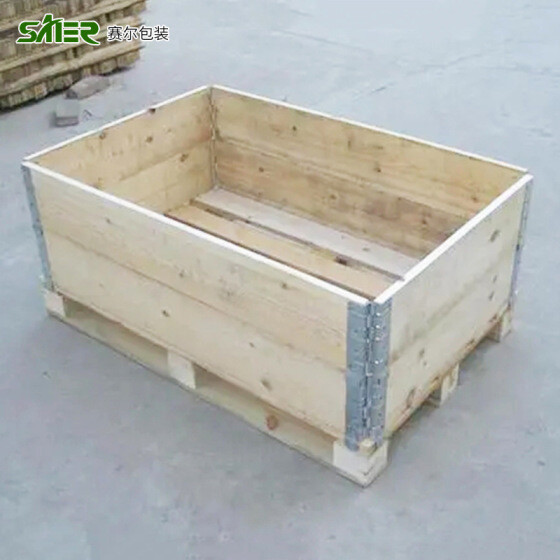
How to Choose the Best Plastic Turnover Boxes for Your Needs
Choosing the right plastic turnover boxes/baskets is crucial for optimizing storage, transportation, and workflow efficiency in industrial and commercial settings. Whether you're an operations manager seeking durable solutions or a business decision-maker evaluating cost-effective options, understanding key factors like material quality, load capacity, and stackability can make all the difference. This guide will help you navigate the essential features to select the perfect plastic turnover boxes for your specific needs.
1. Material Quality and Durability Considerations
When selecting plastic turnover boxes, the material composition directly impacts longevity and performance. High-density polyethylene (HDPE) and polypropylene (PP) dominate the market due to their exceptional impact resistance and chemical stability. HDPE boxes typically withstand temperatures from -30°C to 80°C, making them ideal for cold chain logistics, while PP variants offer superior rigidity for heavy industrial use. Look for UV-stabilized formulations if outdoor storage is required – these prevent brittleness caused by prolonged sun exposure. The material thickness (usually 2-5mm) determines load-bearing capacity; thicker walls support heavier contents but increase weight. For food-grade applications, ensure compliance with FDA (21 CFR) or EU 10/2011 standards. Injection-molded boxes with reinforced corners provide 3-5 times longer service life compared to low-cost thermoformed alternatives, proving more economical despite higher initial investment.
2. Load Capacity and Structural Design Features
Structural innovations like ribbed bases and interlocking sidewalls significantly enhance load distribution. Nestable designs (up to 75% space saving when empty) and collapsible models (ideal for return logistics) provide operational flexibility. For automated handling, verify dimensional compatibility with conveyor systems (standard DIN 30781 or ISO 3676 dimensions). Anti-slip surfaces prevent content shifting during transport, while integrated forklift pockets (minimum 120mm height) ensure safe pallet jack access. Always cross-reference manufacturer's load ratings with your actual usage scenarios – exceeding dynamic load capacities during frequent handling accelerates wear.
3. Industry-Specific Selection Criteria
Different sectors demand specialized plastic turnover box features. Automotive manufacturers often require ESD-safe (electrostatic discharge protected) containers with surface resistance of 10^6-10^9 ohms to prevent component damage. Pharmaceutical applications need smooth, crevice-free designs meeting GMP cleaning standards, preferably with antimicrobial additives. Agriculture operations benefit from ventilated boxes (30-50% open area) for produce cooling, while textile handlers prefer fold-down sidewalls for bulky fabrics. In food processing, bright-colored boxes (blue being industry standard) help identify contamination, with some facilities mandating RFID tags for traceability. Always verify industry-specific certifications like EN 15552 for automotive or HACCP for food contact before purchasing.
4. Cost Analysis and Total Ownership Considerations
While budget plastic turnover boxes may cost 20-30% less initially, their shorter lifespan (typically 1-2 years versus 5-8 years for premium models) results in higher replacement costs. Calculate cost-per-cycle by dividing purchase price by expected service life – durable boxes often prove cheaper long-term. Consider secondary expenses like repair services (hinges and latches commonly fail first), cleaning requirements (smooth surfaces reduce labor), and storage costs (nestability saves warehouse space). Bulk purchases (100+ units) typically secure 15-20% discounts, and some suppliers offer buy-back programs for damaged boxes. For businesses with seasonal demand, rental options (€0.10-€0.30 per box/day) can optimize capital expenditure.
5. Common Selection Mistakes and How to Avoid Them
Many buyers underestimate weight distribution – boxes carrying small heavy items (like engine parts) need thicker base walls than those holding lightweight bulk goods. Another frequent error is overlooking return logistics; boxes traveling through multiple facilities should have standardized dimensions to fit all racking systems. Avoid mixing box colors across departments unless implementing strict color-coding systems, as this causes sorting inefficiencies. Testing samples with actual products before large-scale procurement prevents costly mismatches – load actual weights and simulate at least 50 handling cycles. Lastly, verify supplier warranties (minimum 2 years for structural defects) and after-sales support availability.
Why Choose Our Plastic Turnover Box Solutions?
With 15+ years in industrial packaging, we manufacture ISO 9001-certified plastic turnover boxes using German-grade raw materials. Our patented corner reinforcement technology extends product life by 40% compared to industry averages, backed by a 5-year performance guarantee. Customization options include custom dimensions (±5mm tolerance), embedded tracking chips, and department-specific color coding. Request a free load-test demonstration with your specific products – our engineers will recommend optimal box configurations balancing durability and cost-efficiency. Contact our logistics specialists today for volume discounts and just-in-time delivery programs tailored to your operation scale.
Related Posts
- Top 5 Benefits of Using Plastic Turnover Boxes in Your Business
- Purpose of wooden pallets
- The Hidden Costs of Not Using Plastic Turnover Boxes
- How to Choose the Best Plastic Turnover Boxes for Your Needs
- Are Plastic Pallets the Future of Sustainable Logistics?
- 5 Game-Changing Benefits of Plastic Pallets for Your Business
Products
Message
Leave a message
Have any questions or requests? Please leave a message and we will get back to you as soon as possible.

